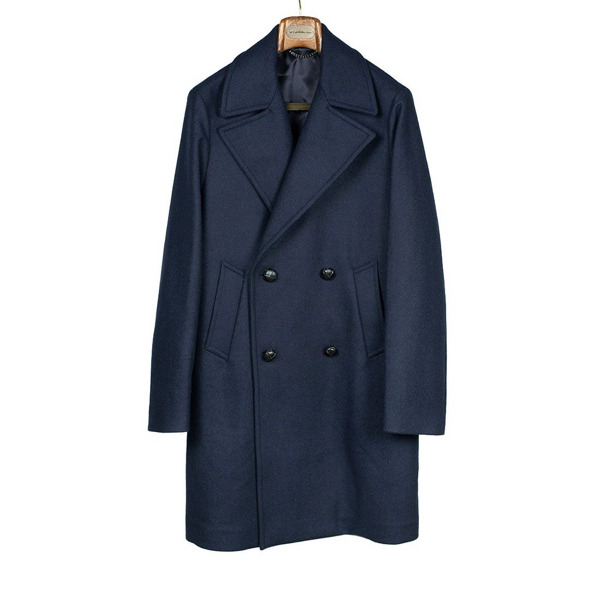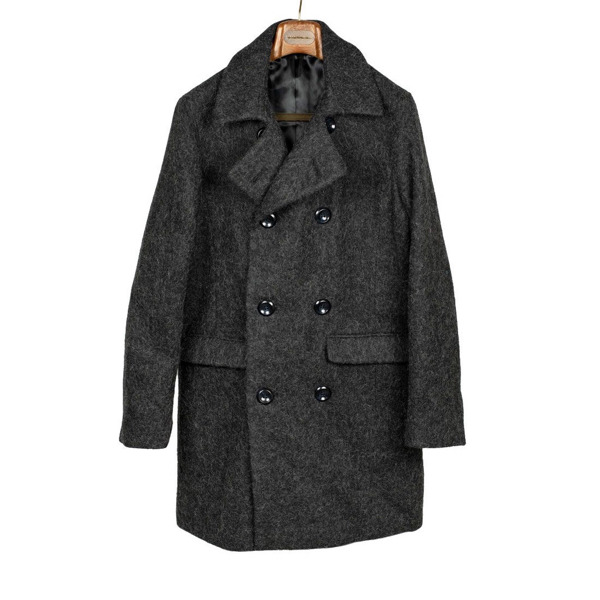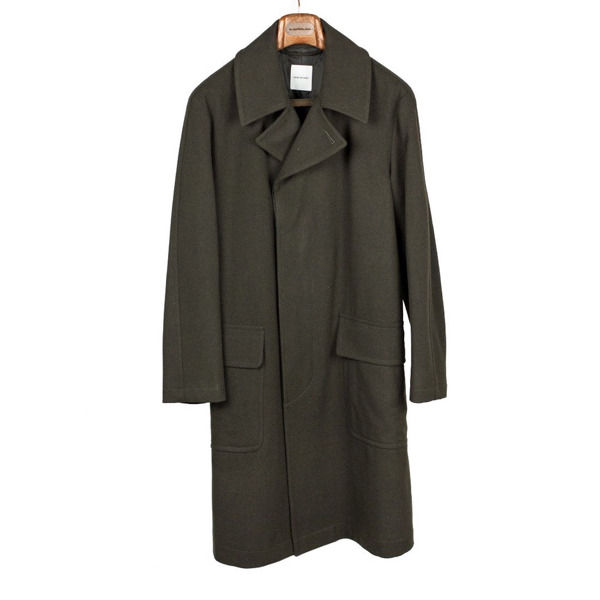Among the most exalted items of the Anglo-American menswear canon is the pea coat. It is versatile, being just as appropriate with blue jeans as with a coat and tie. It is navy, and therefore goes with just about anything. It is distantly military and retains the associated stylistic assertiveness of the double-breasted front and the distinctively shaped collar. But it is not militaristic. A man could live his life in complete peace with no overcoat but a pea coat.
And yet its very ubiquity leads the curious and the devious to seek out alternatives. This article suggests three coats that, whether as substitutes or complements, offer the pea coat’s virtues without suffering the vice of being too widely re-pea-ted. All of these styles are, like the pea coat, stylish and versatile. I find double-breasted overcoats attractive in general and also more warming, so all of these options are, again like the pea coat, double-breasted.
The Bridge Coat

The closest cousin to the pea coat is the bridge coat, which is just like a pea coat, but longer. This added length not only is more protective in difficult weather, but gives the coat a more dramatic effect. The extra length suits a tall man particularly well, endowing him with a more regal bearing; in the navy, the bridge coat the coat worn by officers, where the pea coat is worn by enlisted men.
The Great Coat

The great coat typically features more aggressive lines than the pea coat. The notch in the lapel is deeper and at a wider angle. The silhouette gathers at the waist more dramatically. The great coat has hip pockets but no side pockets. Unlike the pea and bridge coats, the great coat is not particularly associated with the navy, and thus it can be made in other colors (such as the pictured charcoal Frank Leder great coat) and does not feature other maritime details like buttons with anchors on them and the like. It goes by land as well as by sea.
The Trench Coat

By contrast, the trench coat’s lines are softer. The defining feature of the trench coat is its raglan sleeves. The trench coat is designed to be worn in the rain and is therefore, like the bridge coat, usually longer than the pea coat. The result is a more flowing, rounded garment. A trench coat is, again, not a naval item (there are no trenches at sea), and so is rarely made in navy; most often it’s made in khaki, but this olive version by Sage de Cret is by no means out of line.
Of course if you prefer the pea coat itself, there’s no need to deviate from it. But any of these coats offer stylish variety.